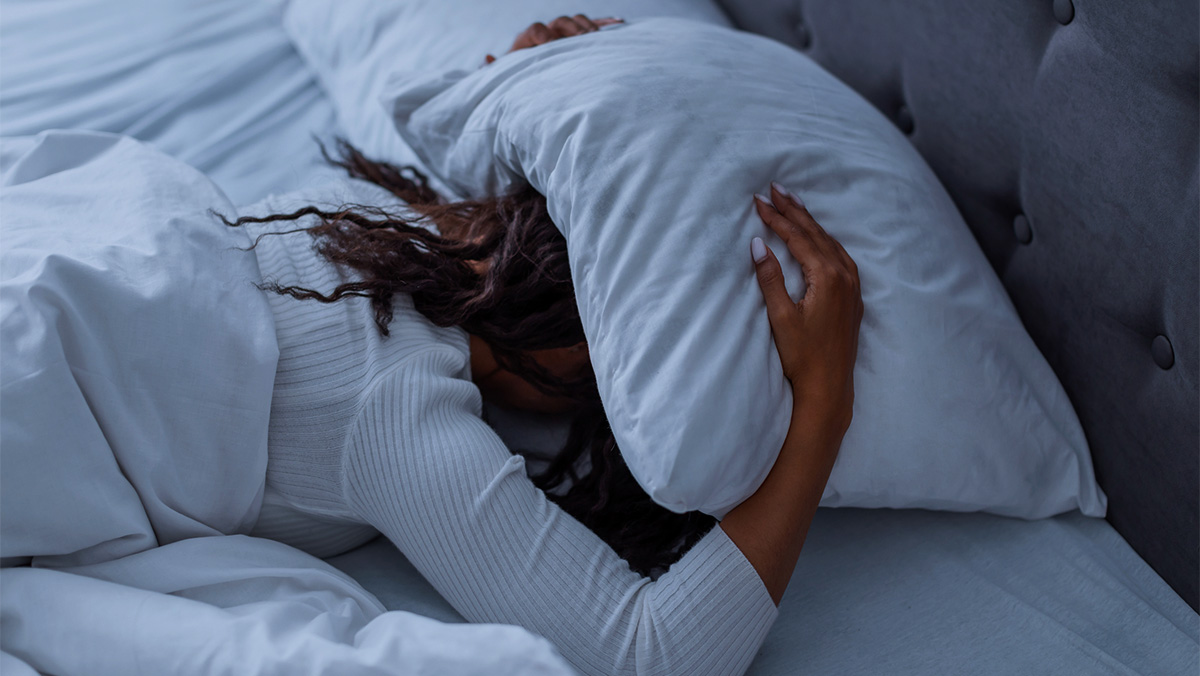A Third of Women Experience Migraines Associated with Menstruation, Most Commonly When Premenopausal

Posted in News Releases | Tagged headache, menstrual migraine, menstruation, migraine, neurology
Media Contact
Karen Teber
km463@georgetown.edu
WASHINGTON (April 15, 2024) — A third of the nearly 20 million women who participated in a national health survey reported migraines during menstruation, and of them, 11.8 million, or 52.5%, were premenopausal. The analysis was conducted by researchers at Georgetown University Medical Center and Pfizer, Inc., which makes a migraine medication.
Because of the underuse of medications to help treat or prevent menstrual migraines, investigators wanted to understand how common menstrual migraines were and which groups of women could most benefit from potential therapies. The study will be presented April 16 at the American Academy of Neurology 2024 Annual Meeting in Denver.

“The first step in helping a woman with menstrual migraine is making a diagnosis; the second part is prescribing a treatment; and the third part is finding treatments patients are satisfied with and remain on to reduce disability and improve quality of life,” says the study author, Jessica Ailani, MD, professor of clinical neurology at Georgetown University School of Medicine and director of the MedStar Georgetown Headache Center at Medstar Georgetown University Hospital.
The researchers used the 2021 U.S. National Health and Wellness Survey, conducted by the National Center for Health Statistics, to analyze responses from women who reported their current migraine treatments, frequency and disabilities via the Migraine Disability Assessment Test (MIDAS), a five-question survey. A migraine headache can cause severe throbbing pain or a pulsing sensation, usually on one side of the head. It’s often accompanied by nausea, vomiting and extreme sensitivity to light and sound.
“Discrepancies in the incidence of who gets migraine attacks associated with menses is likely due to premenopausal women having more regular menstrual cycles and thus more menstrual-related migraines,” says Ailani. “Additionally, as women move into their 40s and become perimenopausal, there tends to be a greater shift through the month in hormone levels, also leading to frequent migraine attacks.”
The survey found that for all women during their menstrual periods, migraine attacks occurred as frequently as 4.5 times and that monthly only migraine headaches lasted 8.4 days, on average; 56.2 % of women had moderate-to-severe migraine-specific disabilities that ranked highest on the MIDAS scale.
When looking at treatments women in the survey used to help control their migraine symptoms, 42.4% used over-the-counter medications while 48.6% used prescription medications. Of the 63.9 % of women who used migraine treatments for acute symptoms, the most commonly used were triptans, a class of drugs developed in the 1990s to quiet overactive nerves associated with migraines and cluster headaches.
Sara’s Story
Sara, a 38-year-old mother of two, says her migraines are predictably and consistently worse during her period.
“It definitely disrupts my ability to go about my normal activities, including at work,” Sara says. “I’m pretty lucky that I’m generally responsive to prescription medication, but I often still have to lie down for an hour or so while the medicine kicks in.”
Sara is being treated preventatively for migraines with Botox. She says over the past couple of months, she’s had a couple of migraines outside of when she gets her period, but that the headaches are definitely worse during menstruation.
“While I had my last period, I had a migraine every day for a week,” Sara says. “It’s starkly different [during menstruation].”
Prevention Possibilities
Nonsteroidal anti-inflammatory drugs (NSAIDs), such as naproxen or ibuprofen, are sometimes used as preventive medications for women with regular menstrual periods. In this study, 21.1% of women reported use of any migraine prevention medications or therapies.
“Preventive treatments are used less frequently than acute treatment for migraine,” Ailani said.
“In my opinion, this is because preventive therapy is a long-term commitment by both a woman and her clinician to improving the disease process. Migraine is a lifelong brain disease without a cure, and the goal of preventive therapy is to reduce disease burden and improve quality of life. Unfortunately, newer disease-specific treatments are costly, so generic older treatments are often used and come with greater side effects.”
Next Steps
The researcher’s next steps involve looking at larger databases to see if they can mimic findings on a global scale. They want to determine if women with menstrual-related migraine are frequently turning to non-migraine treatments, as was seen in around 53% of their current study group.
“As a headache specialist in the U.S., I know I can do better for women in my clinic, but what can be done for the millions of women who don’t get into a headache clinic? That is our true next step,” says Ailani. “If you have migraines related to your menstrual cycle, discuss this with your gynecologist or neurologist. There are treatments that can help, and if the first treatment tried does not work, do not give up.”
In addition to Ailani, co-authors include Joshua Brown, Motomori Lewis, Aaron Jenkins, Jessica Cirillo, Karin Hygge Blakeman, Jiyue Yang, Lucy Abraham from Pfizer, Inc, New York.
This work was supported by Pfizer.
Ailani reports receiving personal compensation for serving as a consultant for Pfizer. Additional disclosures from her and her co-authors can found be on the AAN website.
